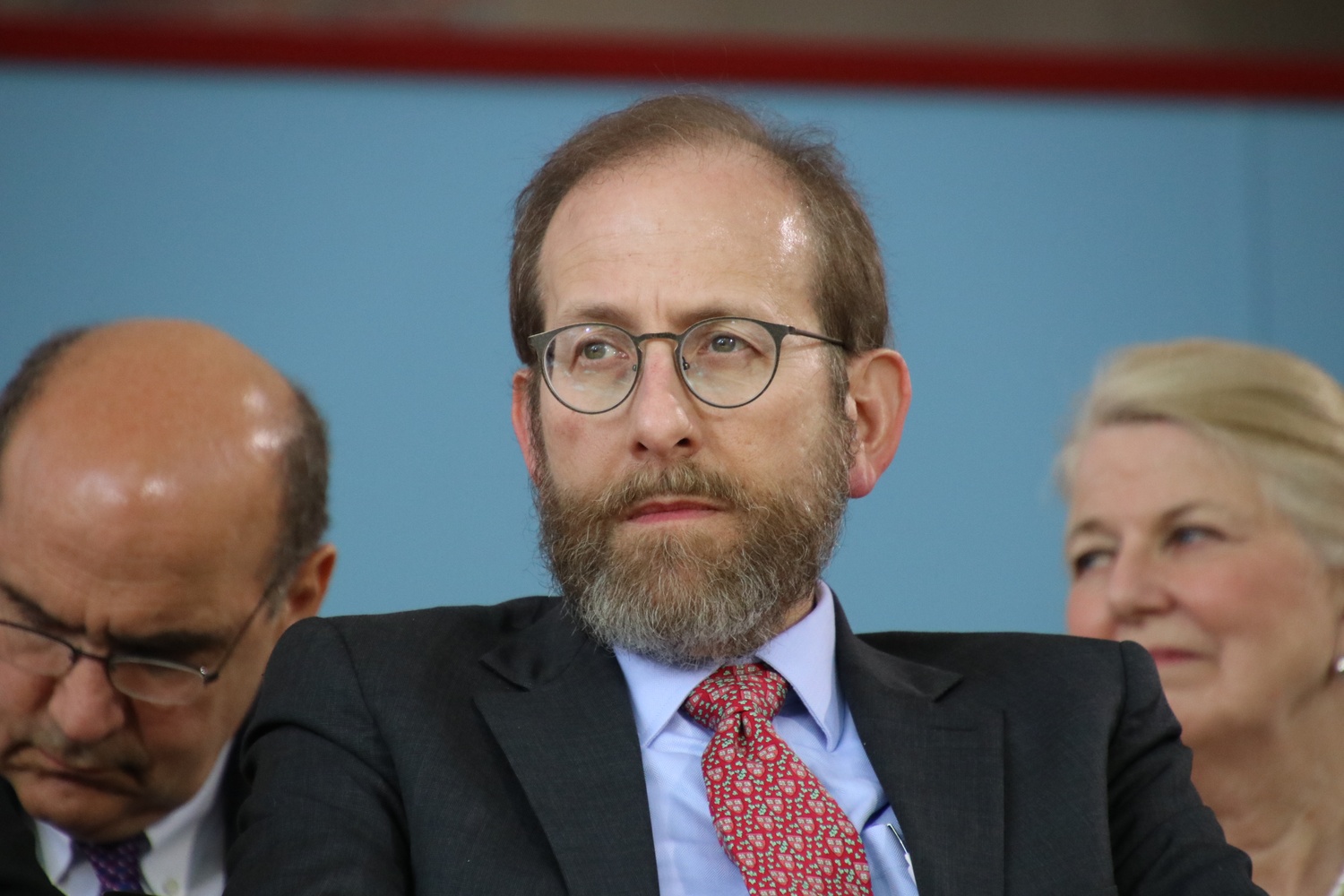
News
Summers Will Not Finish Semester of Teaching as Harvard Investigates Epstein Ties

News
Harvard College Students Report Favoring Divestment from Israel in HUA Survey

News
‘He Should Resign’: Harvard Undergrads Take Hard Line Against Summers Over Epstein Scandal

News
Harvard To Launch New Investigation Into Epstein’s Ties to Summers, Other University Affiliates

News
Harvard Students To Vote on Divestment From Israel in Inaugural HUA Election Survey
Alan Garber’s Harvard Won’t Be Perfect, but It Should Be Transparent

Love him or hate him, Alan M. Garber ’76 is officially Harvard’s president for at least the next three years.
Now, Garber and the rest of University leadership face two nagging questions: How to right the ship after a tumultuous spring semester, and how to select a successor who can ably steward Harvard for the long term.
We can’t expect perfection from the University’s response to these challenges. But after a year marked by a number of opaquely made administrative decisions that only fueled the ire facing Harvard, we should at least expect that it will be transparent.
Let’s start with the current presidency. While some have credited Garber for guiding our university through major challenges, his term thus far has hardly been without controversy.
Most notably, Garber sparked outrage this spring after reneging on what appeared to many to be a promise to refrain from harshly punishing students involved with the Harvard Yard encampment. Despite this agreement being written in both public and private communications, the Harvard College Administrative Board suspended five student protesters and prevented 13 from graduating — sanctions far more extreme than what past students had faced for similar actions.
Though the College ultimately softened those punishments, the debacle dealt a (deserved) blow to Garber’s credibility. To restore it, President Garber must commit himself to communication and transparency with the students and faculty he serves.
That kind of genuine engagement takes more than just listening to freely-given student and faculty input — the University president must actively seek out feedback, holding frequent listening sessions open to the Harvard community and readily accepting meetings with those who request them. Instead of reflexively punishing student protesters, Garber should meet with them.
Regular meetings with students and members of the FAS will fall short, however, if President Garber does not engage with them earnestly and transparently. He can find an example of what to avoid in the Faculty of Arts and Sciences meeting in May where Provost John F. Manning ’82 drew laughs for insisting — incredulously — that then-interim President Garber was not aware of requests from faculty and students to meet with him.
A more transparent, engaged approach will prove essential when Garber inevitably encounters campus conundrums that require decisive action in the next three years. By clearly and candidly communicating with the Harvard community about those decisions, he can better contain crises before they spiral into objects of national intrigue.
A similar ethos must guide the committee that will select a president who could lead Harvard for more than a decade to come.
In this respect, the Harvard Corporation — the governing board that will lead the selection process — is on the right track. Along with the news about Garber’s upgraded title, the Corporation announced on Aug. 2 that it will begin the process of selecting the University’s next president in 2026, in time for them to take office after the 2026-27 academic year.
That delay is wise. In its announcement, the Corporation explicitly disclosed its desire to thoroughly “reflect, in consultation with others” to ensure the best possible presidential search. By taking its time to prepare for and conduct the presidential search, the Corporation can preempt the kind of bad-faith criticism that former University President Claudine Gay faced following the historically-short process that selected her.
While this transparency regarding the search timeline is a good start, the Corporation must maintain that commitment to openness through the finish. It would be unreasonable to expect the Corporation to share every detail of the search, but progress updates every few months or so could help prevent the perception that the search is too slow, speedy, or shadowy.
For Harvard’s leadership, the three years ahead could hold devastating failure or much-needed success. President Garber has the potential to build a legacy that consists of more than banning chalk in Harvard Yard. And the Corporation has the opportunity to set a laudable standard for selecting Harvard presidents to come.
President Garber and the Corporation can continue to silo themselves from the Harvard community and hope for a different result, or they can engage with it. Here’s hoping they choose the latter.
Layla L. Hijjawi ’27, a Crimson Editorial editor, lives in Quincy House.
Want to keep up with breaking news? Subscribe to our email newsletter.
